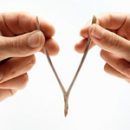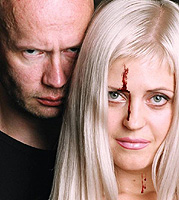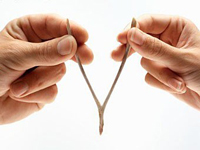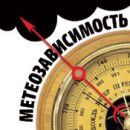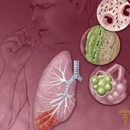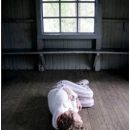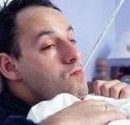The hernia of intervertebral discs is the most common and most severe manifestation of the osteochondrosis of the spine. Up to 19% of patients with hernias of intervertebral discs lie on the Surgeon's table. Why does hernia arise? As manifest? What are the methods of treatment? - Read about it in the article.
Content
Painful changes in the lumbosacral spine are most pronounced between the ages of 20 and 50 and are one of the most frequent causes of temporary disability, and often disabled patient. Up to 50% of all surgical interventions in neurosurgical hospitals are carried out about the pathology of intervertebral disks on the lumbar-sacral level.
The hernia of intervertebral disks are the most common and most severe manifestation of the osteochondrosis of the spine. This develops pain root syndrome, which may be accompanied by paralymps of the muscles of the lower extremities, the disorder of sensitivity, disruption of the function of the pelvic organs. Up to 19% of patients with hernias of intervertebral disks need operational treatment.
Disease occurs as a result of a break of an intervertebral disk. The hernia formed at the same time, leaving back and to the side, presses on the root of the nerve at the place of its exit from the spinal channel and causes inflammation accompanied by an edema. The imprished root of the nerve sends pain impulses into the brain, which are perceived by the patients as if they go out of the legs. Part of the nerve located outside the place of the hernia almost ceases to function, which leads to a sharp decrease in sensitivity and the appearance of weakness in the leg.
Practically all patients with the main complaint is pain. As a rule, pain occurs in the youthful age after moderate physical exertion, an uncomfortable position in the workplace or in bed. Just like when «Prostrole», The disease often occurs when the slope with the simultaneous turn to the side, often in combination with lifting weights. It is also characteristic of a sudden, not particularly strong pain in the area of the lower back.
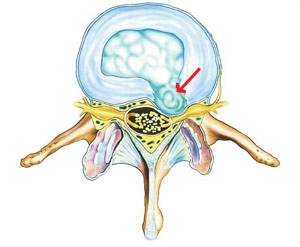 Then, during the day, pain and weakness appear in one of the legs, sometimes with loss of sensitivity on the inside of the foot and lower part of the lower leg or on the outer side of the foot and the inner side of the lower leg. When driving, cough, sneezing or straightening back pain and legs are enhanced and often become so intense that the patient needs to be bed. Some facilitations of the state can be achieved in the lying position, raising her legs or putting them on the pillow.
Then, during the day, pain and weakness appear in one of the legs, sometimes with loss of sensitivity on the inside of the foot and lower part of the lower leg or on the outer side of the foot and the inner side of the lower leg. When driving, cough, sneezing or straightening back pain and legs are enhanced and often become so intense that the patient needs to be bed. Some facilitations of the state can be achieved in the lying position, raising her legs or putting them on the pillow.
Mix two stages of disease development. At the first stage, there is pain in the lumbar region, talking about the start of the disk disease. In this case, a rather complex structure of the fibrous ring is changed, radial cracks are formed in it, which reduces its strength. The pulp nucleus is protruding (in the figure, the protrusion is shown in the red arrow), the blood circulation of this zone is disturbed, there is a swelling of local fabrics, hypoxia spinal cord, spikes appear.
The pain syndrome occurs, which leads to the strengthening of the damaged zone with muscles, the muscles of the back are strained and the overlying spinal departments are worked out due to.
At the second stage, the character of pain syndrome is changing. The so-called root syndrome occurs, which is due to mechanical squeezing and tension of the nerve root. At the same time, the swelling of the root occurs, its blood supply is broken. With direct contact of the hernia of the intervertebral disk with the root, irritation causes a more intense pain syndrome.
Often, in the occurrence of root pain pain in the lumbosacral region weaken or disappear. Apparently, this is due to a decrease in pressure inside the disk due to the gap of the fibrous ring. Pain syndrome can be due not only to the compression of the root (radiculopathy) or spinal cord (myelopathy), but also feeding the root of the vessel - radiculomyeloishemia.
The distribution and localization of the root pain as a whole corresponds to the innervation zone of the compressed root. Pains are more often worn «lamp» character may be permanent or coming. Mainly affects the disks of the 4-5th lumbar vertebrae or the 5th lumbar and 1st sacrilate. Level 3-4th Lumbar vertebrae suffer only in 2-4% of cases. In addition, there may be a decrease or loss, and less often - increase - sensitivity. There is also a cooling, lightweight and dry skin, the sweating changes.
Quite often patients occupy a forced position. Poses that reduce the degree of compression and tension of the root, cause spinal curvature (scoliosis), limit the bending and extension of the body, cause the muscle tension of the back.
Sometimes patients can not straighten the leg due to pain. Parasis are rare, they are more characteristic for launched cases. It may be celebrated «Lose weight» muscles due to the violation of their blood supply.
The human body has a powerful ability to self-upset, which also applies to damage to intervertebral disks. Usually this disease passes in 2-3 months when complying with beddown and rest. Also, as with other diseases of the lumbar spine, it is recommended to lie on the back with the legs raised or laid on the pillow, changing the position of the body, and look for a comfortable painless pose.
In severe pain, it is possible to receive painful, as well as anti-inflammatory drugs - they although they do not accelerate recovery, but reduce suffering. After 3-4 weeks of pain, as a rule, significantly weaken, however, the damage of the disk is not yet heard, so in order to avoid possible complications in the form of chronic pains in the lower back, peace is needed for another month.
Operational treatment is shown in the presence of irregular pain under the treatment of 2 weeks to 3 months, the increase in neurological disorders, violation of the function of pelvic organs, reduce potency, perming perineum.
Another method of treating intervertebral hernia in the acute stage - the spine. This is a very old way, the interest in which is recently increasing. Extracts the pressure drop in the intervertebral space, which makes it possible «suck» Gryry. At the same time, it is necessary to find the right direction of impact and choose the appropriate force so as not to damage the spine to a greater extent. Sometimes the patient is recommended to carry out the extension itself, conforming to painful sensations. With the right procedure, the pain should decrease, and not increase.
So, the methods of treatment of intervertebral hernia are reduced to the following:
one. With greasy gravity pains or if they are tolerant, the patient recommend bed regime and painful drugs to facilitate state or at least for 3-4 weeks.
2. The method of stretching the spine can also be used to quickly loosen the pain. If they, despite the bed and medicinal therapy, are still unbearable, mechanical stretching can also be output from.
3. However, if the pain is unbearable, despite repeated stretching and full of peace, surgical intervention does not exclude.
4. After a sharp period of the disease to strengthen the weak muscles of the back and return to the spine of ordinary mobility should begin classes of medical gymnastics.
Sometimes a decrease in sensitivity in some places of foot and the feeling of weakness is observed in it and after the disappearance of pain. This is due to the fact that the damaged root of the nerve still did not restore its functions. The motor ability of the leg, however, remains normal. The danger of serious consequences, subject to strict compliance with the beddown, from the very beginning of the disease is insignificant.

